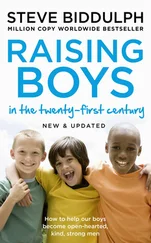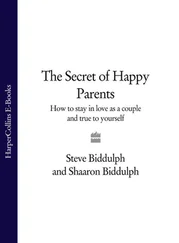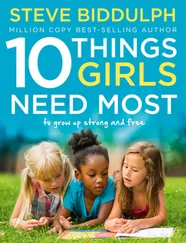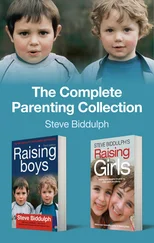From 40 years of working with families I have become convinced that a big part of the problem is the way we live. We have, little by little, slipped into an overbusy, overloaded and overwhelmed life, with some crazy values and ways of spending our time. Our daughters need something more, which we are no longer providing – rich and varied adult connection, mentoring and chances to contribute. Instead, they have taken to the online world for affirmation and comfort, but it isn’t a good or caring place. Instead of finding encouragement that they belong, they are blitzed with media and have become much more pressured to achieve in every way, look good, be amazing and be perfect. The rushed way of life of today is not what humans were designed for. We feel it as adults, but our children – from the littlest toddler girl to the most sophisticated looking (but inside oh-so-fragile) teenager – are being hammered.
We have to change how we live in order to save our girls. We need more heart and time if we are to help our youngsters grow strong. It begins when they are little babies, and continues until when they are fully adult. It’s made up of small things you do every day, which this book will help you to put into action.
Once you put some fences around your life and embrace happier, slower rhythms, then girlhood will be much more natural, smooth and happy. She will love and laugh through her growing-up years, and even the teens will be more adventure than angst. We will teach you all about these stages and how to make them happy and rich in the pages that follow. But the real magic is built into your girl. You just have to release it.
As we free our girls from the monster machine that life has become, we set ourselves free too. Kids change us, and for the better. So your daughter – and her friends – can learn to fly.
Good wishes and my love goes with you,
Steve Biddulph
Meet Kaycee and Genevieve
There are two girls that I would like you to meet. Their names are Kaycee and Genevieve. Both are 17, and both are in Year 12 at school. They are great kids, friendly and bright, you would enjoy talking to them.
These two have known each other since nursery. They were best friends all through primary school and everyone thought they would be that way forever. But around the time Kaycee and Genevieve moved up to secondary school, something went wrong between them. The reason is hard to say, I am not sure they could even pin it down themselves, but today, if they pass in the school corridor, there is that awkward feeling that comes from having once been friends, but no longer being so.
Kaycee and Genevieve’s lives have taken very different paths. I’m going to tell you their stories, because they make really clear the dangers, and the hopes, of girlhood today.
Let’s meet Kaycee first. On first impression Kaycee seems a very grown-up 17-year-old. She wears carefully applied make-up and ultra-fashionable clothes, and she speaks fast and in a clear voice. This much confidence in a teenager may be quite genuine, but if you know young people well, you might wonder if Kaycee has possibly become ‘too old too soon’. And there is something else that you might notice. It’s in her manner. Her expression is world-weary. When she speaks she sounds rather cynical and hard. For a 17-year-old, she doesn’t seem to be having a lot of fun .
Back when Kaycee was 14, something big did happen. It wasn’t the stuff of newspaper headlines, but it was a significant experience that affected the direction of her life.

Halfway through Year 9, Kaycee was invited to a classmate’s birthday party. The parents hosting the party had implied a somewhat higher level of supervision than they actually provided on the night. So the party went pretty much as it would if 40 or 50 kids of varying ages were left in a house at night with lots of alcohol and no adults in sight: loud, chaotic and out of control. Kaycee found it very exciting; in particular because a boy whom she knew, Ciaran, aged 17 and two years above her in school, was there. Kaycee and her friends had often admired Ciaran at school, with his good looks and cool demeanour, but tonight there was something different – he was noticing her . Then, amazingly, it got better still. He sat with her, and they talked and had a few drinks. They talked and snuggled a little in the garden. She could hardly believe her luck (it was all she could manage not to take out her phone and text someone!). After a while, Ciaran stood up, took her by the hand and led her upstairs to one of the many bedrooms in this big, fancy house apparently devoid of adults. They had sex.
It all went faster than Kaycee had imagined her first sexual experience would, and it was less tender too. Blurred by the alcohol, Kaycee’s brain wasn’t really working very well; she was aware though of the shift from the excited feeling of being special and the centre of Ciaran’s attention, to physical discomfort and a sense of being pushed about, invaded, not really noticed as a person. When it was over, which was quite soon, Ciaran managed a kiss before straightening his clothes and leaving the room. When Kaycee got herself together and went out into the party, she felt unsure and shaky. Then she saw Ciaran, standing with a group of friends, who all looked at her and smirked. She realised in an instant that he had been telling them of his ‘conquest’ . Tears burned her face, she fled from the house and ended up in the garden, sobbing. A friend tried to comfort her, but Kaycee wouldn’t say what had happened.
She went home that night in a kind of icy rage. She hated Ciaran now, and for a while boys in general. Kaycee was a spirited girl, she had been independent all her life, her busy parents valued self-sufficiency. She told no one what had happened. (When her parents finally learned about it three years later in a family counselling session, they were saddened and shocked.) But like millions of girls before her who had first sexual experiences they regretted or did not enjoy, Kaycee hid her wounds and got on with her life. But she was a changed girl.
Did the experience put her off boys? Not at all. What it put her off was vulnerability , being the one who was used. She began sleeping with boys on her own initiative, and on her own terms. She chose them, and she called the shots. By the age of 17, when she first spoke to a counsellor, Kaycee had had sex with seven different boys. Possibly eight, there was a night where some alcohol-affected confusion had occurred, and she wasn’t sure.
Now, in Year 12, Kaycee has stabilised somewhat, she has a steady boyfriend. But she doesn’t hold him in very high regard, and confides that she is ‘planning to ditch him sometime soon’.
We know from research, (and from most people’s recollections of their own teenage years), that Kaycee’s experience is not uncommon. Perhaps, one could argue, we just need to be less uptight about teen sex and let them make their own mistakes, and learn from them. (That is also a convenient argument for those parents who prefer not to get involved, or are too busy to keep a close eye on their kids.) But let’s stay with the story …
Kaycee’s life, at this point in time, isn’t going very well. Her parents sought help not because of her sex life, which they were only vaguely aware of, and in a sense didn’t want to know about. Their concern was that her drinking was getting out of control (she was not yet, of course, of drinking age) and she was failing at her expensive private school. She was halfway through Year 12 and the school was concerned about her poor marks and her many absences from class. The family had been advised to ‘see someone’ about her problems. When she arrived with her parents to meet with a counsellor, Kaycee looked angry to have been brought there. But within half an hour, and given a sympathetic listener, she was pouring out her feelings.
Читать дальше













